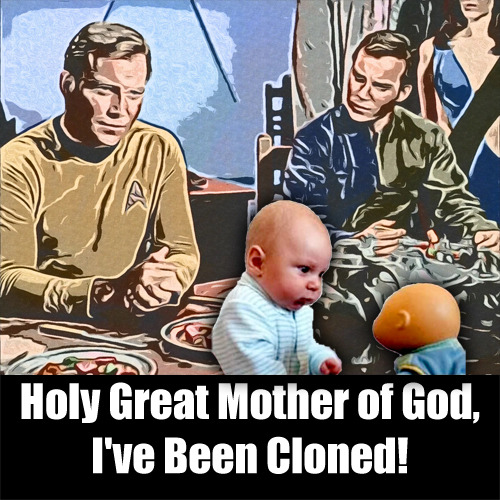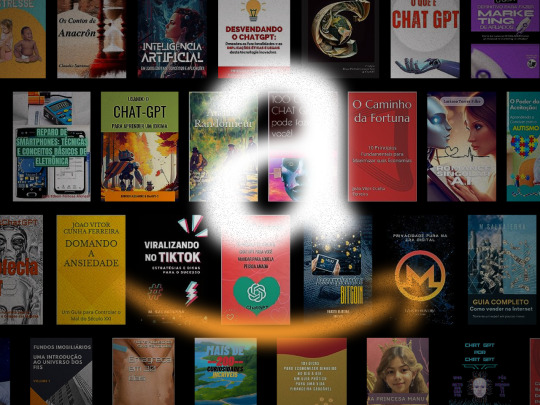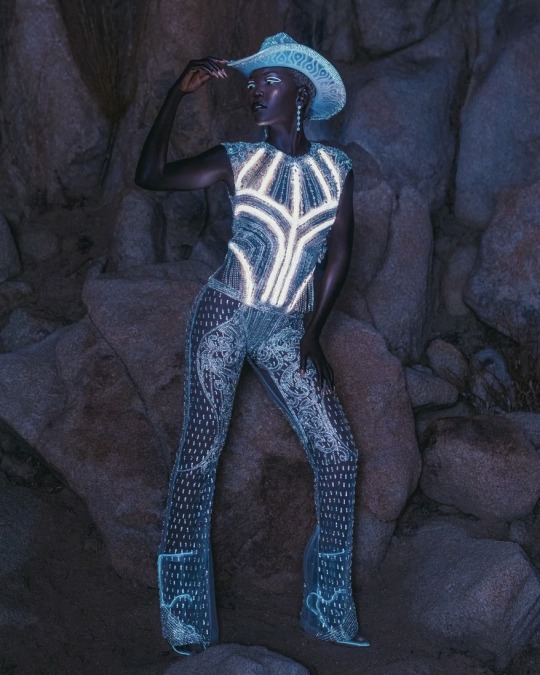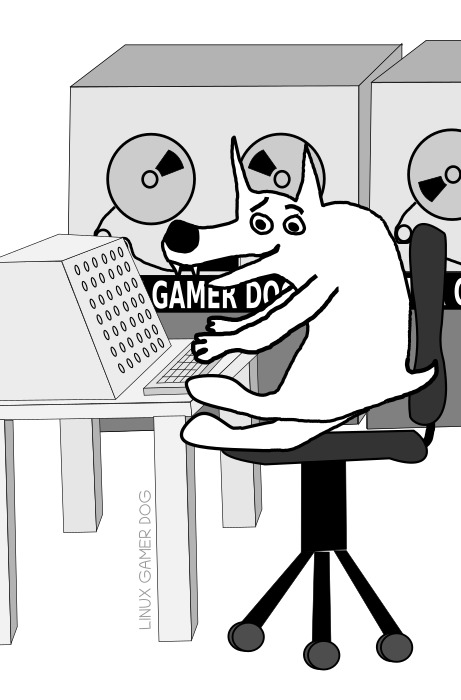#technology bloggers
Text
IoT-Powered Smart Living: A Comprehensive Guide to Future Homes and Daily Transformation
Welcome to the future, where your home is not just a space but an intelligent companion. In my in-depth exploration, "IoT-Powered Smart Living: A Guide to Future Homes and Daily Transformation," we'll navigate through the intricate landscape of the Internet of Things (IoT) and witness the profound impact it has on transforming our daily lives.

IoT-Powered Smart Living
Key Topics Covered:
1. Seamless Connectivity:
Uncover the magic of a home where devices communicate effortlessly, creating a seamless web of connectivity.
Explore the role of IoT in knitting together your smart devices, ensuring they work in harmony to enhance your lifestyle.
2. Intelligent Automation:
Delve into the world of intelligent automation with smart thermostats that adapt to your preferences, lighting systems that set the mood, and much more.
Learn how these technologies anticipate your needs, making your home an intuitive and responsive environment.
3. Real-Life Scenarios:
Immerse yourself in real-life scenarios illustrating how IoT transforms mundane tasks into effortless experiences.
From waking up to a home that adjusts to your morning routine to returning to a well-prepared haven, discover the practical applications of IoT in daily life.
4. Evolving Landscape:
Gain insights into the latest innovations propelling the evolution of smart home technology.
Peek into the future possibilities, from AI-driven personal assistants to advancements in energy efficiency that redefine the way we interact with our living spaces.
Ready to witness the synergy of technology and daily life? Click [here] to embark on this illuminating journey into the world of IoT-powered smart living.
Join me in unraveling the intricacies of a future where your home is not just a place to live but a dynamic and responsive companion. #SmartLiving #IoTInnovation #FutureHomes #ReadMore
#smart-living#digital lifestyle#smarthome#technology#tech trends#technology news#technology bloggers#techinnovation#techenthusiast#tech#IoT-living#smart-devices#IoT-gadgets#IoT-security#secure-devices#smart-lighting#automated-lights#smart-thermostat#climate-automation#smart-appliances#connected-appliances#voice-assistants#voice-control#smart-home-apps#IoT-applications#energy-monitoring#efficient-living
1 note
·
View note
Text







📷* ༘. ♡ digicams* ༘. ♡* 📹*
#anticoquette#digicam#digicore#credit to pinterest#pinterest aesthetic#source: pintrest#y2k#y2k cameras#digital diary#digital camera#digital camcorder#girly#gyaru#gyaru aesthetic#glasses aesthetic#cybercore#cyber aesthetic#girl blogger#camera#camera inspiration#accessories#decoden#technology#cute tech#cute#pink#pink aesthetic#y2k aesthetic#y2k nostalgia#⋆ ˚。⋆୨୧˚ ˚୨୧⋆。˚ ⋆
22 notes
·
View notes
Text
Those Economics/Architecture Videos I've Been Bingeing
But eating less bandwidth than the previous version of this post.
This post has 100 links, because that's how many tumblr lets me add before it refuses to save the post anymore. (Legacy editor allows up to 250, but then I would have the colors.)
A lot of these are about NYC, because that's my personal main focus, but there are a few others. Also, I have absolutely no training in this field and only started watching these a few days ago but Ya Girl Is Bingeing and Really Loves Edutainment. All the descriptions are my own, btw. I'm not looking to gain clicks or references, I want you guys to know what you're getting into.
I was not involved in creating any of these videos, but it did take me over a week to watch them all and decide which ones to include, how to organize, and how to describe the contents.
I cannot speak to a lot of the deeper issues touched on, and do not agree with all the political or economic points brought up in these videos (as this is a wide range of people and topics), but they are by and large a good look at much of an industry that most people, myself included, don't know enough about, considering how crucial it is to our lives.
I'm open to channel/video recs but there are a few I ran into that seem well-done but have an audio quality I can't work with, so that's... unfortunate.
Stewart Hicks - Chicago-based, professor of architecture at the University of Illinois
Why Skyscrapers Are Losing Their Tops - Stewart Hicks
- The general history of architectural styles for skyscrapers from the 1930s to the near future.
Why Do Architects Insist on Using Flat Roofs? - Stewart Hicks
- Compares and contrasts the strengths and weaknesses of flat vs gabled roofs.
How Buildings Changed After the Eiffel Tower - Stewart Hicks
- Thirteen minutes of history on structural engineering in bridges and skyscrapers.
The Bewildering Architecture of Indoor Cities - Stewart Hicks
- Goes into the planned and unplanned variants of this phenomenon, which ranges from giant buildings intended to act as an entire community, to the unplanned network of underground tunnels or overstreet enclosed walkways that let people cross blocks upon blocks of a city without having to step outside.
How This Tower Barely Touches the Ground - Stewart Hicks
- Addresses the engineering behind 150 N. Riverside in Chicago, and the zoning laws that caused its rather unique Y-shaped base in the first place, along with the requirements causing things like custom giant I-beams and necessitating a barge to host the crane since they had nowhere to anchor one on the ground.
How Chicago is Being Unbuilt: Back to Nature - Stewart Hicks
- Explores the ways in which Chicago is undoing prior urbanization, and implementing some new eco-friendly infrastructure and various projects.
Why We Should Live in Our Office Buildings - Stewart Hicks
- More and more office buildings are standing empty. With movements towards more mixed zoning and the return to walkable city models, some of those office buildings are getting retrofitted to be livable spaces and mixed-use locations.
How Architects Design for Less Lonely Living - Stewart Hicks
- In a lot of places, like the US, the way we interact or avoid other people is impacted heavily by the organization of the buildings we live in.
House Sizes Are Getting Absurd - Stewart Hicks
- Just a fun romp comparing the range of sizes (from the bare minimum of capsule hotels to the absurd mass of some modern estates) for various dwellings. Lots of very deliberate visualization.
Shopping Malls are Getting Desperate - Stewart Hicks
- Discusses the decline of shopping malls, and the 'tricks' they employ to try to keep people happy and coming by.
The Architecture of Curb Appeal - Stewart Hicks
- There's a lot that goes into making a house look good in a way that gets it sold. A lot of people hate it.
The Controversy Over Accessory Dwelling Units - Stewart Hicks
- In many places, it's illegal to build a smaller livable space in your backyard. You know, places you put an adult child who wants their own space, or your mother-in-law, or just rent out to college students for the next ten months. But, at least in a few places, it's not going to be illegal much longer.
Toilets Need to Change - Stewart Hicks
- Plumbing is such an important part of our daily lives, and it's still evolving!
The Hidden Meaning and Logistics of Fountains - Stewart Hicks
- This one is just fun. 😊
The Genius of 2x4 Framing - Stewart Hicks
- So apparently the US is a bit odd in how much of our architectural/construction industry uses light wood framing as a standard.
The B1M - Hosted by Fred Mills (British), more generally about construction, rather than just architecture
Why America Is Tearing Down Its Highways - The B1M
- Explores the history of the interstate highway system, and how much of it was used for redlining and general segregation, along with the challenges faced by the plans to tear those highways down.
The $1.2 Trillion Plan to Rebuild America - The B1M
- NGL I'm like. Ludicrously excited about this one. There's a lot going on! I hope it works out!
Why a Billionaire Tried to Stop This Bridge - The B1M
- There's a new bridge being built between Detroit, MI and Windsor, ON. This bridge is going to help with the ongoing trade between the US and Canada; these two cities are already a major hub for one of the largest trading partnerships in the world (the largest where one side is not the European Union), so building another bridge is a reasonable undertaking. However, the new bridge will be just a few miles down from an existing bridge that is currently owned by a billionaire who makes a killing over his control of a major portion of this bottleneck of the trade route. (Also, more engineering challenges!)
The Statue of Liberty: Building an Icon - The B1M
- Someone actually asked me about this recently and anyway you should all go learn about how the Statue of Liberty happened, she's a gem.
Why New York’s Billionaires’ Row Is Half Empty - The B1M- The usage of NYC luxury housing as a semi-liquid asset used as investment by the megarich, along with the rights acquisitions that led to their building in the first place, the gentrification they contribute to, and the tax write-offs they get for it.
Why Our Cities Are So Expensive - The B1M
- How infrastructure investment by governments can and does frequently lead to gentrification. Focuses on London's Battersea Power Station revitalization plan.
Why New York's Skyscrapers Keep Changing Shape - The B1M
- This is actually an exploration of more than just New York, covering much of the same topics as the above 'history of skyscraper design' video, with a great focus on the Chrysler building.
Why No One Wants This New York Skyscraper - The B1M
- Investigates the ways in which the development of Two World Trade Center has been delayed over the past decade and change, along with a handful of other projects in the area.
The Wild Story of New York’s Abandoned Skyscraper - The B1M
- There's a half-finished skyscraper on the western shore of Manhattan, and due to the errors in laying the foundation, there's an 8cm tilt in it. The parties involved in construction are duking it out in court about who's at fault, and until they're done, that thing is just... sitting there.
New York's Latest $3BN Skyscraper Explained - The B1M
- Another stupidly tall skyscraper for midtown. You know. Because we need another one.
The $7BN Plan to Save New York's Most Hated Train Station - The B1M
- Explores the history, current state, and planned upgrades to Penn Station of NYC.
New York's Most Hated Highway is Falling Apart - The B1M
- The issues hitting the Brooklyn-Queens Expressway, and the difficulties in repairing it.
The Secret Subway That Could Save New York - The B1M
- Hey do you want to hear about how we might finally be getting that Queens-Brooklyn line that doesn't need to pass through Manhattan first?
The Tunnel That's Failing New York City - The B1M
- The tunnel that handles a massive amount of the human traffic between NJ and NYC is starting to break down due to age. This one included a line that actually gave me feelings: "Look, it's a 110-year-old system, you know, it's done its job. Like, we really can't ask any more of it." It did its best! For a long time! Thank you!
The US Government Wants to Destroy These Towers - The B1M
- The federal government just wants to demolish some Historic Skyscrapers in Chicago, no biggie.
The Secret $4BN Tunnel Network Under Chicago - The B1M
- Since the 1970s, Chicago has been building an absolutely massive set of tunnels hundreds of feet under the surface to handle regular flooding from storms and the climate crisis.
The Fight to Fix the Tilting Millennium Tower - The B1M
- There's this skyscraper in San Francisco that's leaning a few centimeters to the side, which doesn't sound like a lot, until you learn that just a few more will mean the plumbing and elevators stop working.
The £100BN Railway Dividing a Nation - The B1M
- Goes over the political, economic, and environmental arguments and concerns behind the highspeed rail intended to connect London to the North of England.
Inside London's £19BN New Railway (and its Nightmare Station) - The B1M
- Genuinely fascinated at the number of Train Problems that England seems to be having.
Why Europe Doesn't Build Skyscrapers - The B1M
- Explains the historical and modern reasons that limit the addition of supertall buildings across most of Europe.
The Insane Scale of Europe's New Mega-Tunnel - The B1M
- Explores the engineering and environmental challenges of the Fehmarntunnel, a passage from Germany to Denmark of terrifying size.
Why Europe is Building a 57KM Tunnel Through a Mountain - The B1M
- No, a different one. This one is between Italy and France.
We Went Inside the Largest Nuclear Fusion Reactor - The B1M
- It's in France, there are over 35 countries involved, and it's just a Lot.
Inside The Lab That Tests Elevator Free-Falls - The B1M
- There's this active mine in Finland where they test elevators for safety and it's pretty cool.
Finland Might Have Solved Nuclear Power’s Biggest Problem - The B1M
- Finland has a new way of storing nuclear waste.
Nord Stream 2: The $11BN Megaproject That's Dividing - The B1M
- It's an oil pipeline and it is causing problems for Everyone.
Why Russia is Building an Arctic Silk Road - The B1M
- Russia is taking advantage of the melting ice caps to set up a new trade route through the arctic so shipping can go up through the north instead of down around South Asia and through the Suez Canal.
The $10BN Railway in the Jungle - The B1M
- Mexico is building a new, very long high-speed rail line, and it's incredibly controversial.
Hong Kong's $11BN Underwater Railway Explained - The B1M
- Hong Kong is putting in a new underwater tunnel (as part of a larger network expansion) for its subway system, and it's. Difficult.
China's Skyscraper Boom is Officially Over - The B1M
- Just learned that China is outlawing most skyscrapers. There are a few cases where you can still maybe make one happen, if you can convince the government it's needed, but in most cases... nah. They're cutting you off.
The Unstoppable Growth of China's High-Speed Rail Network - The B1M
- [insert gif screaming about trains here]
The Insane Engineering of Tokyo's First Supertall Skyscraper - The B1M
- While the focus is ostensibly Main Tower, the video covers a lot of ground regarding earthquakes and the necessary engineering to resist the incredibly frequent occurrence.
(Warning: Came out shortly after the Feb. 2023 Turkey-Syria earthquake, and contains references to the event, urging people contribute what they could to help. The video was already almost finished when the Turkey-Syria earthquake happened, and rather than delay it for fear of it being in bad taste, they decided to use it to encourage people to help the victims.)
Japan’s $64BN Gamble on Levitating Bullet Trains Explained - The B1M
- Let's talk about maglev, pros and cons.
Is This Asia's Next Financial Capital? - The B1M
- Malaysia is building a lot, and it might herald a new financial superpower for the continent and the world.
Why India Doesn’t Build Skyscrapers - The B1M
- The short answer is 'zoning laws that didn't achieve what the legislators hoped,' but it's changing.
The $4BN Railway Reshaping Delhi - The B1M
- What it says on the tin.
The World's Most Extreme Construction Site - The B1M
- Antarctica!!!
Egypt Built a Supertall Skyscraper in the Desert - The B1M
- Egypt is straight up building an entire city in the middle of nowhere, primarily as a new seat of government, because Cairo is overcrowded... and a frequent site of protests.
Top 10 Projects Completing in 2023 - The B1M
- Some impressive, expensive, and possibly unnecessary projects that are happening.
Tomorrow's Build is a second channel under The B1M, also hosted by Fred Mills. It's more focused on hypothetical, future projects than ongoing ones.
Barcelona’s Car-Free Superblocks Explained - Tomorrow's Build
- Barcelona is planning to block off entire parts of the city from most car usage, excepting local delivery, mass transit, and emergency services.
The Hidden Crisis With Renewable Energy - Tomorrow's Build
- Storage of energy from renewable sources that are not consistently available (e.g. solar is only available when the sun is out) is difficult, so here are a few options.
This Nuclear Plant is Built in 3 Months - Tomorrow's Build
- Mail-order nuclear power is going to be a thing.
Greece is Turning its Olympic Ruins into a Casino - Tomorrow's Build
- [good for them dot gif]
This Could Stop Construction Everywhere - Tomorrow's Build
- So it turns out we're running out of sand. Which is important, because we need sand for concrete, and the easiest stuff to get (desert sand), doesn't work for that, which is why Dubai has to import sand for construction. So uh. Kind of a crisis. Sand pirates are a whole thing.
Architectural Digest - channel for the architectural magazine that dates back to 1920
Architect Breaks Down 5 of the Most Common New York Apartments - Architectural Digest
- Just what it says on the tin! An architect explains brownstones, classics, railroad apartments, and loft/studio apartments. Lots of history, specifically that of the late 19th century tenement buildings and the art community and subsequent gentrification of SoHo.
Architect Breaks Down 6 Luxury Apartments from Billions, Gossip Girl & More - Architectural Digest
- On the other end of NYC housing, we got the Rich People Places.
Architect Breaks Down Secret Details Of The Chrysler Building - Architectural Digest
- An exploration of the external details of the Chrysler, with commentary on the historical context of art deco and related art movements.
Architect Breaks Down 3 Demolished New York Landmarks - Architectural Digest
- Goes over the original Penn Station, Madison Square Garden,and the New York Herald building.
Architect Breaks Down The Evolving Skyscrapers Of New - Architectural Digest
- I'm... not going to pretend I'm less than obsessed with NYC videos. Sorry! ¯\_(ツ)_/¯
Covers setback/wedding cake tiered, glass curtain wall, plaza towers, expressed structures, and the (hated) supertall.
Architect Breaks Down NYC Subway Stations (Oldest & Newest) - Architectural Digest
- And we continue on NYC infrastructure history because I am insatiable.
Architect Explores New York City's Greenwich Village | Walking Tour - Architectural Digest
- What a beautiful and inconvenient neighborhood, full of so many dead bodies.
Top Luxury - Despite the name, is about construction in general, including critique of megearich projects, so don't go in expecting it to be About The Luxury
World's Most Useless Megaprojects - Top Luxury
- Did you know there are entire cities lying around empty? I already knew that, but there are just. So many giant projects that never got finished, ate up a lot of money, and are just kind of sitting around now.
5 Skyscrapers that Never Existed - Top Luxury
- Some of these never got past the concept stage, and some ran out of funding, and at least one got turned into a fish farm by locals after it was abandoned.
Biggest Megaprojects in the World - Top Luxury
- Exactly what it says on the tin! Guys, there are so many giant projects happening, and so many of them are controversial As Heck.
Why these Megacities are Still Empty - Top Luxury
- Not entirely empty, but yeah, there are some megacities designed for one purpose or another that are more Ghost Town than Bustling Metropolis. Other than Naypyidaw, though, most of them are expected to gain larger populations soon, particularly Nusantara (which is being built specifically due to the sinking of Jakarta).
The Most Terrifying Bridges in the World - Top Luxury
- Like half of these are in a specific region of China that just has. So many mountains.
Most Expensive Construction Mistakes in the World (Part 3) - Top Luxury
- Have you ever fucked up so incredibly that it cost six billion USD to fix?
Not Just Bikes - Canadian living in Europe; city planning with focus on N. American car-centric zoning
Why City Design is Important (and Why I Hate Houston) - Not Just Bikes
- Do you want more ammo to show people when they try to argue with you about walkable cities?
America Always Gets This Wrong (when building transit) - Not Just Bikes
- How zoning and city planning needs to adjust in order for mass transit to actually work for people.
Suburbs that don't Suck - Streetcar Suburbs (Riverdale, Toronto) - Not Just Bikes
- So there actually are good suburbs in the US and Canada, we just can't build them anymore because zoning laws make it impossible.
Stroads are Ugly, Expensive, and Dangerous (and they're everywhere) - Not Just Bikes
- So there's this really popular and horrible form of street/road in the US and Canada that is bad at its job.
Would You Fall for It? - Not Just Bikes
- 1950s pro-highway propaganda (which is referenced in many other videos from this channel), and the ways in which it was misleading and effective.
These Stupid Trucks are Literally Killing Us - Not Just Bikes
- This video actually did numbers on tumblr a few months ago. You know those stupidly big SUVs and Pick-ups? Yeah! They suck!
Cities Aren't Loud: Cars Are Loud - Not Just Bikes
- With a few small changes, you too could live in a city that doesn't make you want to wear noise-cancelling headphones every moment of the day.
IT'S HISTORY - Various historic places... mostly NYC
Why can't you visit the Statue of Liberty's Torch? - IT'S HISTORY
- Has some confusing image choices (photos from the early 20th century while talking about events from the 18th), but delivers on a fun history of the Statue of Liberty (and includes some facts that the other Lady Liberty video didn't get around to).
What's Left of New York's Lost Reservoir? - IT'S HISTORY
- Apparently it turned into Bryant Park.
When Chicago built the Tallest Building in the World | The story of Sears Tower - IT'S HISTORY
- Just what it says on the tin.. Big building, big history!
The Secret Tunnels Beneath New York - IT'S HISTORY
- NYC has lost so many tunnels? Lost track of, forgotten, rediscovered... it's ridiculous. Half of these are for TRAINS. Those are HUGE.
Led to me making this post (which contains a meme or two, but also a very important trigger warning).
Other
The lost neighborhood under New York's Central Park - Vox
- Explains the history of Seneca Village: a primarily-black community of newly wealthy, often first-generation-freed peoples that was destroyed to make way for Central Park.
The Rise and Fall of American Malls - Bloomberg Originals
- Covers the factors that led to malls becoming so common, and the many things that are contributing to the move away from them.
Megastructures: Building the Burj Al Arab | Dubai Engineering - Reel Truth Science Documentaries
- This is fifty minutes of engineering and architecture, and really well done/presented. Mostly steers clear of the larger political controversy in favor of focusing on the math, though it can't entirely avoid the political and economic conflicts due to direct influence on the design by a the Crown Prince.
Why Venice is Europe’s Worst Placed City - Real Life Lore
- We all know Venice is sinking, but this explains why and how (it's not just global climate change).
Why Wyoming is VASTLY Emptier Than Colorado - Real Life Lore
- More of a general history lesson than architecture, but still fun.
Why Engineers Can't Control Rivers - Practical Engineering
- I've had a few classes touch on this topic, but it was mostly back in high school. This video has some really good visualization on the main elements, and addresses that there are some places working on actual fixes!
Why Construction Projects Always Go Over Budget - Practical Engineering
- Goes over the process by which costs are estimated, the limitations of those processes, and the risks that inevitably force the budget higher.
Czechia's Incredible 1960s Supervillain-Lair Hotel (And Why Its Architect Got Banned By The Regime) - The Tim Traveller
- There's this really cool hotel that recently got refurbished.
Why Egypt Is Building a New Capital City - neo
- Another video on the new city in Egypt, but with more in-depth exploration of the specific planning choices (where certain buildings are, especially).
The Forgotten Story of Modulex: LEGO's Lost Cousin - Peter Dibble
- LEGO had a brand called Modulex that was used for architecture and city planning for a few decades. These days they mostly do signage.
Why Airplanes Are Still Worth Millions After They Stop Flying - CNBC
- The various ways planes are broken down, sold for parts, and otherwise recycled.
#architecture#construction#phoenix recs#phoenix liveblogs#industry#green movement#technology#current events#I'm allowing tips because this is a recommendation list that took me several days to complete rather than derivative/transformative/repost#Kind of like a blogger getting paid to do rec lists for local restaurants or something#that said I've gotten tumblr tips MAYBE twice so these tags are only a preventative measure for 'why are they allowed'#as I don't actually expect any money out of this#product reviews#kinda
132 notes
·
View notes
Text

Top 10 generative AI tools for software developers ✨
Generative AI can be used among developers for providing solutions, coding widgets, fixing bugs, and learning as well. Generative AI is considered a cutting-edge field in AI research due to its potential to create high-quality, innovative outputs that can be indistinguishable from human-generated content. 👩🏻💻
1. ChatGPT
2. Google Gemini
3. OpenAI Codex
4. AlphaCode
5. GPT-4
6. GitHub Copilot
7. Amazon CodeWhisperer
8. Tabnine
9. CodeWP
#malusokay#girl blogger#it girl#pink blog#that girl#coquette#aesthetic#makeup routine#this is what makes us girls#girly things#dream girl#girly stuff#girlblogging#live laugh girlblog#gaslight gatekeep girlblog#this is a girlblog#girlblog aesthetic#glow up diaries#makeup#coquettecore#dollete aesthetic#vintage americana#machinelearning#technology#datascience#developer#softwareengineer#software
10 notes
·
View notes
Text
WeLcomE CrEativE FolKs....
🎸 👽...........

Greetings, creative individuals. I extend a warm welcome to each one of you to this blog. This platform is designed for individuals aspiring to embark on distinctive journeys in life, spanning various creative domains such as music, drawing, painting, crochet, guitar playing, writing, and any other artistic pursuits. I wholeheartedly embrace those who yearn to exhibit their talents to a global audience.
You may ponder, given the novelty of this blog, what it has to offer. It's a valid inquiry, and allow me to elucidate that I maintain four active blogs on Tumblr, where your creative endeavors will find a platform for dissemination, allowing you to fully explore your aptitudes. Hence, I urge you not to delay, but rather, join this blog and nurture your talents and aspirations. I express my gratitude to you. Maintain a cheerful disposition, persevere resolutely, and accept my heartfelt best wishes.
RuleS: Ladies and gentlemen of creative inclination, as you are undoubtedly aware, this blog has been meticulously crafted to serve as a platform for the cultivation and expression of artistic talent. It is my humble request that you graciously embrace and observe the established guidelines governing this platform. I earnestly implore you to desist from introducing personal or unsolicited content into this forum.
Please be informed that any deviations from these prescribed rules will result in appropriate actions and stringent measures being taken against the responsible parties.
We sincerely hope for your conscientious adherence to the regulations outlined herein.
In closing, I encourage you to maintain an optimistic disposition, persevere unwaveringly, and accept our heartfelt best wishes for your continuous happiness.
Below are the blogs:
@creativespacetime @sunnycosmology @mysteryofspacetime @ms-mazariegos @generalinternetyouth @generalinternetyouth @normalweirdoboy @staff @art @nature @explore-blog @blogdopastel @blogger @cosmos-kitty @universeofmemes @worldscifest-blog @nasa @timelightbox @infinity @books-n-quotes @content @postplus @postitforward @newblog @explore-everywhere @books @support @music @writing-prompt-s @writersnoonereads @painterwithgryffindor-blog @drawingarchitecture @crochetmelovely @crochet-gifs @crochetyknitter @designersof @poetry @poetic @voyagehour @booksquoteslove
#writers#flowers#nature#chaotic academia#technology#music#books and libraries#crochet#natural#artwork#tags#explore#blogs#bloggers#content#infinity#voyage#science#reality#spirit#writer#thoughts#poetry#universe#designer#books & libraries#quotes#talent#creativity#creative writing
22 notes
·
View notes
Text
Kuron sakusei ni tsuite wa dodesu ka?

The concept of the human soul is deep, rooted in philosophy, religion, and spirituality. Its definition varies across different cultural and philosophical ideas. A textbook definition of the human soul might be considered as:
“An immaterial, eternal, and indivisible essence that embodies the unique identity, consciousness, and spiritual nature of an individual human being. It is believed to transcend the physical body and is often associated with qualities such as morality, emotions, intellect, and the capacity for free will. In many religious and philosophical concepts, the soul is considered the core of human consciousness, the source, the locus of personal identity beyond the physical plain of death.” ~ChatGPT
In this talk we will expand upon the human soul’s root in philosophy, religion, and spirituality. We are going to add physics, binary information systems, robotics, biomechanical, sociology, quantum mechanics, gravity and other technologies to this talk about the human soul.
We will repeat ourselves often here.
Be ready…
1) Is the human soul, a piece of quantifiable data?
In 1901, Duncan McDougall, a physician in Haverhill, Massachusetts attempted an experiment to determine whether the human soul has physical weight or not at the exact moment of death. The experiment was to use a very sensitive weight scale of the time period to weigh the body at the moment of death to test whether or not substantial mass leaves the body at the moment of death. The experiment did have results but could not be collaborated by other experiments, often the results were inconclusive, and the scientific community as a whole would later recognize McDougall’s experiments as unreliable. However, despite this, the experiment popularized the urban legend that the human soul weighs 21.3 grams. The question of whether the human soul can be measured or quantified gets into some pretty deep, critical thinking and problem solving thought experiments about what makes us, well, us… The soul is like the core of our identity, consciousness, and people have been talking about it since the first humans looked up at the sky and asked; “Each of us at some time in our lives, turns to someone - a father, a brother, a God... and asks...” “Why am I here? What was I meant to be?” “Is this all that I am? Is there nothing more?” ~Kirk/Spock talking about V’ger, “Star Trek: The Motion Picture” (1979).
Traditional religious ideas say the soul is beyond what science can measure. That the soul is beyond human comprehension. They see it as something divine, connected to God, and lasting forever. In more recent times, with all our technological growth since 1901, science tries to look at the soul in a more practical and scientific way. Religion says the human soul and God is beyond science and that is correct, “from a certain point of view.” ~Obi-Wan Kenobi, “Star Wars: A New Hope” (1977). Right now, that is true. Our complete knowledge of science, specifically physics, is extremely incomplete. We are trying to solve a problem with only a fraction of the data and science we need to tackle the problem. The amount of science-things we did not know in 1901 is daunting. We didn’t know back in 1901 what the structure and function of DNA was. We didn’t know about the existence and properties of subatomic particles such as electrons, protons, and neutrons yet. We didn’t have the theory of relativity proposed by Albert Einstein. Any concept of quantum mechanics and its implications for understanding the behavior of particles on a very small scale. No knowledge on the extent of the universe and the nature of galaxies beyond our own Milky Way or the role of bacteria and viruses in causing diseases. We didn’t have the causes and mechanisms of genetic inheritance or the full extent of Earth's geological history, including plate tectonics and continental drift. We were only in the infancy stages of the complexities of human psychology and the workings of the brain. The potential for space exploration and travel beyond Earth's atmosphere wasn’t even known as science-fiction yet. They were still calling these stories ‘fantasy.’ Flash-forward 123 years to 2024 and science learned all those things above that we did not have in 1901. Science uses tools like brain scans to understand how our brains work and how they relate to our thoughts and feelings. They think that maybe the soul is just the result of all the complicated processes happening in our brains. This might sound like they're taking away the magic from the idea of the soul, but it's more about trying to understand it in a new light. Some even wonder if we could create a kind of digital version of ourselves, keeping our memories and personalities alive in computers. So, while old beliefs say the soul is beyond measurement, new science is pushing us to rethink that. It's a big question that mixes religion, science, and our own deep thoughts about who or what we are. The human soul is a big puzzle that we keep trying to solve. It is part of what makes us human, always curious about the mysteries of our own existence.
2) Does the soul have mass? If so it ‘must’ obey the laws of physics in the form of the conservation of mass and energy, respectfully.
When we talk about whether the soul has weight, we're really asking if it behaves according to the laws that govern our physical reality, which is physics. The conservation of mass and energy says that you cannot just magically have “stuff” pop in or out of existence from nothing—it can only change shape or form. The conservation of mass and energy in its infancy was theorized as far back as 520 BCE by the Jain philosophy, a non-creationist philosophy based on the teachings of Mahavira, stated that the universe and its constituents such as matter cannot be destroyed or created. It was later expanded upon through expression dating back to Hero of Alexandria’s time. The law can be seen in the works of Joseph Black, Henry Cavendish, and Jean Rey. One of the first to outline the principle was Mikhail Lomonosov in 1756. He may have demonstrated it by experiments and had discussed the principle in 1748 through correspondence with Leonhard Euler. The conservation of mass and energy was later heavily defined in science when experiments later carried out by Antoine Lavoisier; who expressed his conclusion in 1773, and was popularized as the principle of conservation of mass and energy.
A friend of yours comes up to you with one of those giant cookies. Your friend cannot just make the cookie disappear or create a new one out of thin air. Instead, they can change the cookie into something else, like crumbs or energy when one eats it. The total amount of cookie-stuff (mass) and the energy it contains stays the same, even if it changes form. So, it's like saying you can't make something out of nothing, but you can transform what you have into different things. This is a universal law and everything of EVERYTHING physical applies to it except for a universal law that would combine gravity of the macro reality with that of the quantum one. Most of this statement is true. There is a slight misconception though. The principle of conservation of mass and energy does indeed assert that you cannot create or destroy matter or energy; instead, they can only change forms. However, the part about exceptions related to gravity and quantum mechanics is not entirely accurate. Conservation laws, including the conservation of mass and energy, are fundamental principles that apply universally to all physical processes, including those involving gravity and quantum mechanics. There is no exception to these conservation laws. While our understanding of gravity and quantum mechanics may lead to complexities in certain situations, the conservation of mass and energy still holds true as a fundamental principle governing the behavior of ALL Matter and Energy in the UNIVERSE.
When we talk about whether the soul has mass, it's important to think about what the soul really is? In relation to the law of conservation of mass and energy, the soul is energy, yes, but it is in a form our current understanding of physics cannot yet define. Under these circumstances we cannot ‘force’ our understanding of this till the science catches up. Take this ‘thing’ called the ‘soul.’ It’s obviously a ‘thing.’ It is a form of energy, but since we cannot yet quantify it in physical terms does it have to obey the laws of physics? That is the question that if we can answer it, then we can do something about that, with that. Traditionally, people think of it as something separate from the body, like a spirit. So, saying it has weight might sound strange because weight usually goes with things that have physical mass. We can touch and measure it. If a thing can be measured then it must obey the laws of physics. It cannot outright break the laws of physics. The only thing we can sort of understand that does this is a black hole. Nothing else discovered fits this definition. If the soul does have attributes that make it a real and tangible thing, which it is, because we experience it, but we cannot properly define it in science terms, it would have mass which means it has weight, it would mean it follows the rules of physics. Like how matter and energy can't just appear or disappear—they can only change from one form to another. This idea makes us think that maybe the soul is a part of the physical reality and interacts with it. In the end, whether the soul has mass and follows the rules of physics is still something we're trying to figure out. It's a big question that makes us think hard and brings together different ideas from religion, science, and philosophy. The actual truth lies somewhere in between all of that; and as we know none of these things play very well together in the sandbox at the park, we call the UNIVERSE...
3) However, do we even have ‘that great an understanding’ of all of physics?
We know next to nothing about physics as a whole. In doing research for this blog I found a “List of unsolved problems in physics,” https://en.m.wikipedia.org/wiki/List_of_unsolved_problems_in_physics. Where I counted 121 separate subjected-areas of study that the human race cannot answer. There are loads more to discover and understand. As we make strides the answers and solutions tend to come in waves. We solve one problem it may shed light on others, opening up doors to all of the problems, all at once. Gradual improvements, adding new data, and solutions till the next discovery that opens the next door and the next. They can happen quickly or over long periods of time. Have no doubt though, there is a lot more to discover. When we put AI to these problems, this also may warrant some progress.
Our incomplete understanding of physics can be demonstrated in the 2014 Christopher Nolan film "Interstellar." That data from inside a black hole’s singularity can provide clarity on mastering energy, mass, and gravity into one grand unifying theory of everything. This premise touches upon several themes related to our lack of proper understanding of physics and the quest for knowledge that transcends current scientific boundaries. Black holes represent all the answers to all the questions we ever had about the universe and will ever have. The most extreme environments in the universe, where the laws of physics as we currently understand them literally break down into nonsense. This is the only thing in existence that has these attributes. Within a black hole's singularity, gravitational forces become infinitely strong, and space-time itself undergoes dramatic distortions warping the fabric of space-time onto itself. It is so heavy and the gravity is so strong it collapses onto itself where it pulls everything within its reach, into itself. The belief that accessing data from within a black hole could provide clarity on mastering energy, mass, and gravity stems from the notion that these extreme conditions may hold the key to unlocking new insights into fundamental physical phenomena of the universe. Humans seek this information in the quest for a unified theory of physics that reconciles quantum mechanics and general relativity. Current theories offer powerful explanations for phenomena at different scales, but they are not yet fully compatible or integrated into one another. The belief that data from within a black hole singularity could shed light on this unification reflects the desire to understand the underlying principles that govern the structure of the universe itself and at its most fundamental level.
Despite the progress made in the field of physics and technology, there are still many crazy things that elude explanation within the framework of quantum mechanics and general relativity. Dark matter, dark energy, and the nature of consciousness are just a few examples of mysteries that challenge our understanding of the universe on a daily basis. The belief that accessing data from within a black hole could save the human race stems from a recognition of the limitations of our current understanding of physics and a hope that new discoveries could provide solutions to pressing existential threats. It's important to note that "Interstellar" is a work of speculative fiction, and the concept of obtaining data from within a black hole singularity is a narrative device called a “macguffin,” main thing that is used to drive the plot and characters forward. While the film's premise is based on scientific principles, it takes liberties with current knowledge and concludes into the realm of speculative conjecture. Still, the film's exploration of these ideas sparks curiosity and imagination, prompting contemplation of these mysteries of the cosmos, the limits of human understanding and the imagination.
4) If the soul is quantifiable then how can it be described in binary?
The concept of translating the soul into binary code, a language of ones and zeros used in computers, is a thought-provoking idea that connects with many areas of study, like the brain, philosophy, and technology. While it opens up exciting possibilities for understanding consciousness, it also raises deep questions about who we are and the limits of our existence. Imagine if we could represent the soul, the essence of our consciousness, with just ones and zeros, like how computers store information. It suggests a way to simplify something complex into basic parts. But consciousness isn't like a simple computer program—it's a mix of thoughts, feelings, and experiences that can't easily be broken down into digital terms like binary code. Thinking about the soul in terms of binary also brings up big ethical questions. If we could copy someone's consciousness like we copy a computer file, what would that mean for our sense of self? Would we still be unique individuals, or just copies of each other? And should we even be messing with something as fundamental as our consciousness in that fashion? It is only now that we are gaining control over our genetics where we could, and probably will, alter our future evolutionary path. A few decades ago nature was in 100% control of future human iterations. Every couples of years now we gain more and more control over this process. It's not just about science and technology but also philosophy, ethics, and even our understanding of what it means to be human. If we ever figure out how to map the soul in binary, it would change everything we know about ourselves and our place in the world. But until then, it's a fascinating question that shows just how complex and mysterious the human mind really is. Just think of it though. Take your consciousness and put it into different bodies at will. Be an interesting dive.
5) Is it a clone of the body or the person itself? What if we make a bunch of Dwayne Johnson's (The Rock) but they only look, sound, identical and have individually different souls/minds?
Cloning brings up big questions about who we are and what makes us unique, especially when we think about whether we're cloning just the body or the individual- personality that also belongs to that original body. Imagine, making copies of Dwayne Johnson, also known as ‘The Rock.’ They might all look and sound exactly the same, but would they be the same person inside? Cloning technology can make genetically identical individuals, but it cannot copy everything that makes a person who they are. Things like memories, experiences, and personality are shaped by lots of different events, like how we're raised, where we grow up, and the people we interact with. So even if we made a bunch of Rock-clones and raised them all the same way, they'd probably end up being different people. Each clone would go through life in their own way, learning and growing based on their unique subjective experiences. This means they'd develop their own personalities and ways of thinking that are separate from each other. Even if they started out identical, they'd become individuals over time. When we talk about the soul, it adds another layer of complexity. Some people believe that there's something more to us than just our bodies and brains—that there's a soul or spirit that makes us who we are. Cloning might copy the body, but it can't copy whatever that ‘soul-stuff’ is. So, even if we could make a bunch of Dwayne Johnson clones, they wouldn't all be the same person. They'd each be their own individual with their own thoughts, feelings, and experiences. It's a reminder that even with all our technology, there's still a lot about being human that we don't fully understand. However, if we go back to mapping the entirety of one’s ‘soul’ into binary code? I mean, if we could actually do it and made it work. Now you could have a way to do it. Granted, we’d need one hell of a “macguffin.”
6) Can two identically copied consciousness’s coexist in the same space, time, and space/time simultaneously? Or would they cancel each other out if they came into direct physical contact with one another? From the science fiction film, “Timecop,” (1994), per the grandfather paradox.
The question of whether two identically copied consciousnesses could coexist in the same space, time, and space/time simultaneously delves into the realm of speculative science fiction and metaphysical philosophy. This concept raises profound questions about the nature of identity, the fabric of reality, and the potential consequences of encountering alternate versions of oneself by method of time travel. In popular science fiction scenarios like the grandfather paradox, time travel often serves as a narrative device to explore the complexities of causality and temporal dynamics. The paradox speculates a hypothetical scenario in which a time traveler goes back in time either accidently or purposefully to prevent their own grandfather from meeting their grandmother, thereby erasing their own existence. This scenario highlights the potential paradoxes and contradictions that arise when encountering alternate versions of oneself in the temporal continuum. In Peter Hyams 1994 film "Timecop," it is specifically stated that the same matter cannot occupy the same space at the same time. One cannot travel back in time and occupy the same exact space as their younger self. Coming into direct physical contact causes both pieces of matter, people, to annihilate themselves in a self-contained implosion of matter coming together and then vanishing from existence. In "Timecop," It's like trying to fit two puzzle pieces into the same spot—they just can't both be there at once. So, if someone from the future meets their younger self in the past, using this logic, and they touch each other or come into direct physical contact, it causes a kind of implosion. It's as if the matter from both versions of the person or object suddenly get squished together and then disappear in a few moments. Think of it like trying to shove two magnets with the same poles together—they repel each other so strongly that they can't stay in the same place. It's a unique way for the movie to show the consequences of creating a time paradox. The rule, ‘macguffin,’ that says two identical things cannot occupy the same space at the same time. Similarly, the idea of two identically copied consciousnesses coexisting in the same space/time raises intriguing philosophical dilemmas. Is the human soul, a piece of quantifiable data? Does the soul have mass? If so it would "have to obey the laws of physics” in the form of the conservation of mass and energy. Everything in the universe has to obey these laws. The only exception to the rule as of now is black holes. Do we even have ‘that great an understanding’ of all of physics? There are still many wonders that escape explanation within physics. The nature of consciousness is just one example of the mysteries that challenge our understanding of the universe. If the soul is quantifiable then how can it be described in binary, digital, terms or binary-code? Is it a clone of the body or the person itself? If consciousness is viewed as a fundamental aspect of individual identity, then encountering an identical copy of oneself could challenge one's sense of self, agency, God, creation and existence itself. Would the presence of another identical consciousness diminish or negate one's own sense of identity, leading to a cancellation of consciousnesses? Or would the two consciousnesses coexist harmoniously, each maintaining its unique perspective from the divergent point of view and agency within the shared reality? One possible interpretation is that the encounter between two identical consciousnesses could lead to a merging or integration of experiences and perspectives, resulting in a richer and more nuanced understanding of selfhood and existence. Alternatively, the encounter could give rise to existential conflicts and existential crises, as individuals grapple with the implications of encountering alternate versions of themselves that have different thoughts, feelings, perspectives and experiences from the observer’s point of view.
7) Religious implications... Is cloning against the God of religion, all religions?
The religious implications of cloning are deeply subtle and vary significantly across different religious traditions. While some religious perspectives may view cloning as inherently incompatible or as a violation of the sanctity of life, playing GOD, others may adopt more refined positions that consider the ethical and moral dimensions of cloning within a broader theological basis. Improving the quality of life by curing diseases with cloning-type technologies. Whether cloning is against the God of all religions, it's essential to recognize the diversity of beliefs and interpretations within all the religious communities. While certain religious traditions may explicitly prohibit or condemn cloning based on theological principles, others may offer more delicate perspectives that take into account the complexities of modern science and technology. For example, within Christianity, interpretations of the Bible vary widely, leading to divergent views on cloning. Some Christian denominations may view cloning as opposing to the biblical concept of God as the ultimate creator of life, while others may emphasize human gatekeeping over creation and the responsible use of scientific knowledge for the betterment of all-mankind. Within Islam, there is a range of opinions on cloning, with some scholars arguing that it is permissible within certain ethical guidelines, while others may express concerns about the potential ethical implications of cloning human beings. Probably not the best option to go digging into Islam for anything permissible and/or ethical. Much of the world sees Islam as dangerous and radical, but not for the faith in a God but how they treat anything that does not believe in what they believe, which is fundamentally wrong to force any idea onto another person or group. In Judaism, views on cloning also vary, with some Jewish scholars drawing on traditional ethical principles such as the sanctity of life and the concept of "tikkun olam" (repairing the world) to inform their perspectives on cloning. In Hinduism and Buddhism, the concept of reincarnation and the interconnectedness of all life influence attitudes toward cloning, with some believers expressing concerns about the potential disruption of karmic cycles or the creation of beings without a predetermined destiny. The question of whether cloning is against the God of all religions isn’t a straightforward question to answer. It requires careful consideration of theological principles, ethical values, and scientific insights within the context of ‘each religious tradition.’ While some religious perspectives may oppose cloning, others may offer more focused and contextualized approaches that seek to balance theological concerns with considerations of human welfare, pursuit of knowledge, and improving the quality of life for all-mankind. It will always come down to; does one, some, many, all believe in the one-God creation myth and it is a myth.
8) Sociology implications... What is the purpose of the clone? The intention?
Cloning brings up a lot of questions about how it is used and what it's meant for. Looking at why we clone things and what we want to do with them can tell us a lot about how cloning affects society as a whole. One big thing to think about is why we're cloning stuff in the first place. It's not just about making copies—it's about what we want those copies to do. Cloning could be used for all kinds of things, like treating diseases by making personalized medical treatments or helping people have babies when they can't do it on their own. When we use cloning for medical stuff, the goal is to make people healthier, happier and to live longer, healthier and happier. There is always going to be questions about who gets access to these treatments and whether everyone can benefit from them equally. On the other hand, when we use cloning for making babies, things get a bit more complicated. Some folks might want to clone themselves to keep their family line going or to have a child who's genetically related to them. Others might want to pick and choose specific traits for their baby, like picking out clothes from a catalog. Drawn to the prospect of creating "designer offspring" with desired traits. This will bring up big ethical questions about whether we're treating people like products and whether everyone should have the same chance to have kids the way they want. Cloning also raises concerns about identity and how clones fit into society. If someone is cloned for a specific purpose, like being a soldier or a worker, do they have the same rights as everyone else? And what happens if they rebel against their creators? Understanding the motivations and/or perversions behind each of these purposes is essential for assessing their societal implications. What about abuse of this technology? Build a Clone Army like in “Star Wars Episode II: Attack of the Clones” (2002). The Arnold Schwarzenegger led 2000 film "The 6th Day," a man discovers he's been illegally cloned and must fight to reclaim his identity in a world where cloning is a dangerous reality. "The Island" (2005) - Directed by Michael Bay, follows a group of clones who discover the truth about their existence and rebel against their creators. "Splice" (2009) - Tells the story of two scientists who create a human-animal hybrid, leading to disturbing consequences. "Moon" (2009) - Follows a man working alone on a lunar mining base who discovers a shocking truth about his identity and purpose.
It's not just about making copies—it's about what those copies mean for all of us.
9) Cloning just parts for medical purposes?
Imagine if science could grow new body parts, like fingers or hands, from your own cells to replace ones you've lost in an accident. It sounds like something out of a sci-fi movie, but it's a real possibility with cloning technology. This kind of medical cloning, called ‘regenerative medicine,’ has the potential to revolutionize healthcare, but it also brings up some big ethical questions. One of the main concerns is consent—making sure people have a say in what happens to their own genetic material. Even though growing replacement body parts could be a game-changer for people who need them, it's important to respect their right to choose whether or not to use this technology. You do not want your genetic material out there like some of your all’s personal data or signing it away to said company for them to allow you access like phone apps. They grow you a new leg and in-turn get to keep your genetic makeup for their own uses. I would think most would want control over those sorts of aspects. One can wonder though turning human tissue into a commodity. As cloning gets more advanced, there's a risk that body parts could be bought and sold like products on Amazon. To avoid this, we need strong, but very clear language, rules, and guidelines to make sure cloning is used responsibly and ethically in medicine and not for nefarious intentions. What must be understood are the complex context of cloning... Cloning for medical purposes and using it to make babies are not one in the same or even the same thing at all. The only thing they have in common is they use cloning technology to come their intentional outcome. Medical cloning here in this sub-point is all about making replacement tissues or organs to help people get better, while reproductive cloning is about making whole new organisms. Keeping these two things separate, we can focus on the medical benefits of cloning without getting caught up in ethical debates about creating life. There's still a lot we do not know about cloning, especially when it comes to just making parts instead of whole bodies. As previously stated we might not even be able to do this without the whole body. We have to be careful not to accidentally create conscious beings without realizing it. It's a tricky balance between using cloning to help people and making sure we're not doing anything unethical in the process. And therein lies the problem… By what specific criteria do humans judge a thing, anything, ethical and/or unethical? By what actual standard?
10) We can clone the body but, not the mind/spirit. Instead, science uses a way to create an image of a person's personality using their entire INTERNET history. See example “Caprica,” (2009) “Battlestar Galatica Re-imagined” (2004-2009) prequel series about how AI/Cylon is created in that fictionalized-Universe.
The concept of replicating a person's mind or personality using their internet history raises intriguing questions about the intersection of technology, ethics, and identity. While advancements in artificial intelligence and data analysis techniques have made it possible to analyze vast amounts of digital information, the idea of creating an accurate replica of a person's consciousness remains speculative and troubled in complexities. The ability to generate an image/copy of a person's personality based on their internet history opens up possibilities for understanding human behavior and understanding in unprecedented ways. By analyzing patterns in online activity, such as social media interactions, search queries, time eyes are tracked on specific things on your screen(s), comments you leave, notes you take and digitally save and browsing habits, researchers may gain insights into the details of individual personalities and decision-making processes. This could have applications in fields such as marketing, psychology, and personalized healthcare. However, privacy concerns loom large, as the collection and analysis of personal data from online sources raise questions about consent, autonomy, and the potential for surveillance and manipulation. The unauthorized use of individuals' digital footprints to create virtual replicas of their personalities without their explicit consent could violate their rights to privacy and self-determination. On the other side of this how accurate could this possibly be? There's the question of how well computers can really understand human stuff. Sure, they're good at crunching numbers and spotting patterns, but they're not so great at understanding emotions or social situations. So, even if they analyze all your internet history, they might miss out on the real you—the one with all the messy feelings and thoughts that don't always show up online. Or do they? Not everything you do online reflects who you are in real life. People don't always act the same way online as they do in person. Many don’t actually. So, even if they collect all this data about you, it might not paint an accurate picture. Not everyone or even most are verbatim who they are in real life using their computer. Much is lost in translation. An example would be do you post everything that comes into your mind as far judgements go on all your social media platforms? No of course not, most do not, while some actually do though. We see you Karen… What I am saying here is if one often thinks in those terms and then does not replicate that same logic, attitude, and behavior in the way they use a computer, smartphone or the internet. How accurate would that image be when compared to the real you? Much is lost in translation. AI would have to fill in the gaps with its own interpretation of that same logic. In order for a copy of something to be perfect it has to be perfectly copied. While artificial intelligence algorithms may excel at identifying patterns in data, they may struggle to capture the degrees of human consciousness and subjective experience. In most science fiction AI tends to struggle with understanding, conceptually, what the ‘human element’ actually is and how it functions. Factors such as context, emotion, and social dynamics are difficult to quantify and replicate accurately, raising doubts about the reliability of personality replicas generated from computer data and internet history alone. If we went by my own internet history I would appear to be a sci-fi nerd obsessed with cloning humans haha… While it's fascinating to think about recreating personalities from internet data, there's still a lot we don't know. It's like trying to copy a painting without knowing all the colors—it might look similar, but it won't be quite right. It would be something familiar but likely a hyper-radical of a portion of that person’s personality but not their personality verbatim.
Ok, see what I mean? I do not think I can just say “CLONING” in a simple way and it just be understood. In my defense, cloning isn't exactly a simple concept... It isn’t a MEME or TIKTOK—it's a complex subject that touches on various fields.
Science helps us understand the natural world, including our bodies and minds. It guides us in thinking about how cloning could work and what it might mean. Technology is key in making cloning happen. We must think about the ethics of using it to create and manipulate life. Robotics we are getting pretty good at in recent years. Making robots that act more-like humans. So, how close are we to making biological copies, too? Biomechanical looks at how living things interact with machines. It helps us think about creating biological beings that are part-human, part-machine. Medicine is all about health and healing, but when it comes to cloning, we have to consider the ethics of tinkering with our bodies. Sociology is about how we live together in society. So, we need to think about how cloning might change our social norms and values. Different religions have their own views on the soul and what makes us human. So, we have to think about how cloning fits into these beliefs as well. Spirituality explores beliefs about the soul and what lies beyond the physical world. It's important to consider how cloning might challenge and/or open up these beliefs. Philosophy dives into big questions about life, consciousness, and who we are. It helps us think about things like the soul, whether cloning is ethical, and what it means for our identity. The psychology of it digs into how our minds work. The psychological impact of cloning on people. Physics tells us about the rules that govern the universe. Understanding these helps us see how cloning fits into the bigger picture. While metaphysics looks at reality beyond what we can touch and see. It ponders how our souls fit into the physical world and then later into the spiritual one. Computers use binary code (ones and zeros) to do stuff. Can we really quantify and copy something as complex as human consciousness with it? Conservation of mass and energy are basic rules of the universe. Understanding how they apply to the soul and cloning helps us think about what's fathomable. Quantum mechanics explores the weird reality of tiny particles. Could quantum stuff affect consciousness and cloning? A complete understanding of gravity would be a big deal in how we understand how the universe works. The theory of everything, that grand theory that explains everything in the UNIVERSE. How might this tie into cloning and our understanding of the soul? What we are missing in physics is we do not know everything about how the universe works. So, there are still gaps in our understanding of consciousness, how cloning might affect it and basically most other subjects connected to it, which is EVERYTHING...
Cloning isn't just about making copies—it's a journey through science, ethics, philosophy, religion, and what it means to be a ‘THING,’ existing, at all. Being human…
Kuron sakusei ni tsuite wa dodesu ka?
Japanese (What About Cloning?)
by David-Angelo Mineo
4/13/2024
6,233 Words
#writersnetwork#writer#blogger#writerscorner#thesoul#soul#clones#cloning#AI#technology#religion#philosphy#consciousness#identity#morality#freewill#physics#conservationofmassandenergy#understanding#binary#blackhole#spacetime#grandfatherparadox#paradox#timetrave#sociology#intentionality#caprica#cylon#whataboutcloning
7 notes
·
View notes
Text
~Uzun zamnadır hayatımda ne eksik diyordum meğerse monstera gitmem eksikmiş yarın ben gene monstera gidiyorum umarım hemen yarın yapıp verirler bilgisayarımı 🥲
#monster#pc#bilgisayar#book girl#girlblogging#tumblr girls#book blog#music girls#text post#coffee girl#post#girl blogger#gamer girl#girl#tumblr postları#writers on tumblr#tumblog#pink blog#blogging#blog#book blogger#postlarım#my post#my text#text#technology#gönderilerim#writer blr#book blr
5 notes
·
View notes
Text
So, in Brazilian book market news, books generated by Artificial Intelligence are starting to pop up in the country's Amazon store.

Journalists from Núcleo Jornalismo had identified new 59 books on the website on the past 30 days. Within this set, 52 titles make clear in their information the use of AI tools for text generation, placing the co-authorship for “Artificial Intelligence” or “ChatGPT”, the OpenAI chatbot. In another three cases, authorship is attributed to MidJourney (an AI focused on images), while four obtained confirmation from the report through alternative approaches, checking on YouTube.
In July, Amazon and six other leading AI companies pledged to the US White House to use technology responsibly. Representatives of these companies signed an agreement that includes the implementation of a watermarking system, which, in theory, will inform users when content on their platforms is generated by artificial intelligence algorithms.
The themes of the publications found vary from children's books to self-help works, fiction and even imitations of renowned authors. Some of them explore the metanarrative, under which ChatGPT investigates its own nature.
Núcleo also noticed 46 new coloring books in the last 30 days on Amazon alone. Everyone seems to be using the basics of digital marketing videos. However, without certainty that they were created from AI, the works were not counted.
Influential authors are also sharing concerns about another angle to this situation: spam. Some firmly argue that the volume of AI-generated books is putting detrimental pressure on Amazon, especially for indie authors. And it doesn't stop there; these authors also accuse this content of becoming a kind of “click farm”, a term that describes the mass production of questionable and superficial content to attract attention and audience.
(x)
#brazil#politics#brazilian politics#books#artificial intelligence#technology#gotta be transparent and honest here for Good Amateur Journalism so here be noted that this blogger hates aye eye#if i may vent: i spend my whole life swallowing books like a black hole and spending uncountable hours practicing to improve my writing#and these clowns spam stores and even AO3 and Wattpad with their garbage generated by glorified autocompleters#are we all a joke to you#no no need to answer we know we are#which is why we °clears throat and switches to Diplomatic Voice° have issues with you#translations and summaries
26 notes
·
View notes
Text
https://www.musingthoughts.com

#musingthoughts#startups#technology#bloggingcommunity#blogger#artificial intelligence#self love#article#writing
21 notes
·
View notes
Text
3 notes
·
View notes
Text
Hi
How are you??
#blogger#blog#education#earn money online#technology#history#highlights#fantasy high#hip hop#i love him#mine#hello#hey#personal#my face
4 notes
·
View notes
Text
En İyi 10 Yapay Zeka Metin Yazma Aracı
#ai#tech#technews#technology#teknologi#teknoloji#yapay zeka#yapayzekâ#teknofest#blog#blogger#blog post#write#writing
4 notes
·
View notes
Text
First Blog Post
Hello! I'm Mr Taha 😁. This my first blog post guys.
https://technoworld.iceiy.com
2 notes
·
View notes
Text










LED light up outfits from Neon Cowboys’ NYFW debut collection | @neoncowboys on IG
#art#futuristic#archive#art archive#fashion#fashion accessories#fashion aesthetic#fashion archive#aesthetic#fashion blogger#art trends#artgallery#neon colors#neoncore#neon cowboys#space cowboy#cowboys#cowgirls#fashion technology news#fashion tech#fashion week#nyfw#nyfw2022#outfit#led lights#led
35 notes
·
View notes
Text

Linux Gamer Dog working on a Mainframe computer.
I drew this cartoon yesterday.
Linux Gamer Dog
#linux gamer dog#linux#computers#mainframe#technology#video games#cartoon#drawing#comics#meme#wordpress#blogger#computer art#iphone#vintage#old school#1970s#1960s#old computers
23 notes
·
View notes
Text

Discover creativity at its finest with KreativanSays.com, your go-to blogging hub. Explore insightful articles, engaging stories, and inspiring content in art and design. Join our community for a quick dose of inspiration with every visit. Your journey into boundless creativity starts here.
3 notes
·
View notes